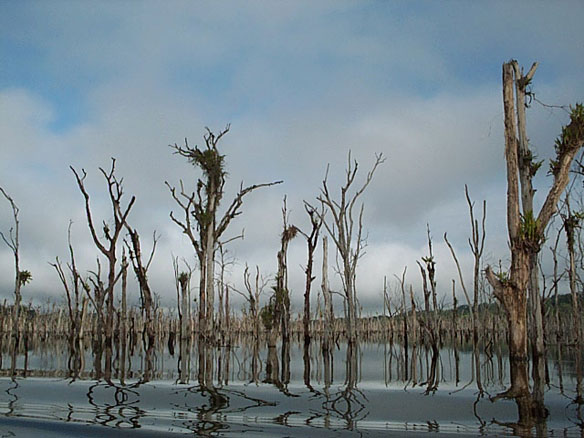
Dire Consequences of Dam Reservoir Emissions, Petit Saut Reservoir, French Guiana. A growing number of scientific studies indicate that reservoirs, especially in the tropics, are a significant source of global greenhouse gas pollution. The “fuel” for these emissions is the rotting of organic matter from the vegetation and soils flooded when the reservoir is first filled. The carbon in the plankton and plants that live and die in the reservoir, the detritus washed down from the watershed above, and the seasonal flooding of plants along the reservoir fringes, ensure that emissions continue for the lifetime of the reservoir. Captions and Photo source: ©© Frédéric Guérin / International Rivers
Excerpts;
For the past ten years, it has been known that hydroelectric reservoirs in tropical regions are an important source of methane (CH4), a greenhouse gas that is considerably more powerful than carbon dioxide. Methane is produced by bacteria that decompose organic matter in the soils and vegetation flooded when the reservoir is filled. In tropical regions, these reservoirs probably release between 1% and 18% of anthropogenic methane into the atmosphere.
For the first time, methane emissions by ebullition from tropical reservoirs have been accurately quantified…
Read Full Article, CNRS via ALphagalileo
Sediment Trapped Behind Dams Makes Them ‘Hot Spots’ for Greenhouse Gas Emissions, Science Daily (08-01-2013)
The large reservoirs of water behind the world’s 50,000 large dams are a known source of methane. Methane has a warming effect 25 times more powerful than carbon dioxide. That knowledge led to questions about hydroelectric power’s image as a green and nonpolluting energy source…








